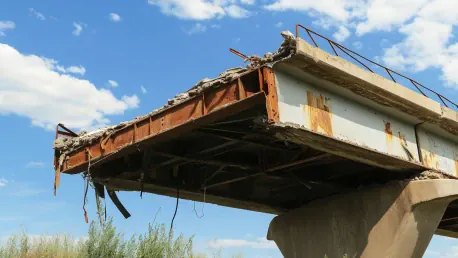The National Transportation Safety Board (NTSB) has identified 68 bridges across 19 states that require extensive vulnerability assessments to determine their risk of collapse due to vessel collisions. This urgent directive follows the dramatic collapse of the Francis Scott Key Bridge in Baltimore, which occurred in March of this year after being struck by the 984-foot containership Dali. Highlighting the urgency of the situation, the NTSB has urged around 30 bridge operators, including various state agencies and port authorities, to address the potential “risk of catastrophic collapse” of these structures to safeguard public safety.
Historical Context and Methodology
A methodology for calculating risks stemming from vessel collisions was developed in 1991, driven by the catastrophic collapse of the Sunshine Skyway Bridge in 1980. This formula, created by the American Association of State Highway and Transportation Officials (AASHTO), indicated that the Key Bridge, operational since 1977, had a collapse risk 30 times above the acceptable threshold. Despite its vital importance, the Key Bridge’s design predates these essential guidelines, highlighting a vulnerability in older structures. Since 1994, the Federal Highway Administration has mandated that bridges constructed post-1994 undergo risk assessments, but many of the pre-existing bridges lack these evaluations.
To tackle these pressing risks, the NTSB advocates implementing AASHTO’s Method II calculation, which assesses the annual frequency of potential collapse for these bridges. If determined that the risk surpasses acceptable levels, comprehensive risk reduction plans must be initiated. Despite AASHTO’s reaffirmations in 2009, a significant number of bridge owners have delayed conducting these critical assessments, exacerbating the risks they face today.
Recommendations and Collaborative Efforts
In response to these alarming findings, the NTSB recommends the formation of an interdisciplinary task force including the Federal Highway Administration (FHWA), the U.S. Coast Guard, and the U.S. Army Corps of Engineers. This collaborative effort is envisioned to assist bridge owners in addressing existing vulnerabilities, which may involve implementing both structural improvements and modifications in operational practices. The NTSB’s strategy emphasizes coordinated action between different authorities to ensure consistent and effective approaches to enhancing bridge safety.
Additionally, the urgency of these assessments is underpinned by the evolution of vessel traffic and the increasing size of modern ships, which pose more significant risks to existing infrastructure. The NTSB’s effort underscores the critical need for proactive measures and detailed risk management strategies to avoid future tragedies. The preliminary findings, as detailed in the Marine Investigation Report expected to finalize in the autumn, highlight the necessity of these immediate remedial initiatives.
Ensuring Long-term Infrastructure Safety
The thorough investigation conducted by the NTSB draws attention to the growing necessity for evaluating older bridges proactively to ensure they can withstand evolving challenges. Larger and more frequent vessel traffic demands modernized infrastructural resilience. This need for proactive risk management is highlighted by the devastating incident in Baltimore.
To provide a long-term solution, a systematic approach to infrastructure improvement and operational modifications is vital. Bridge authorities must prioritize assessments to identify areas requiring immediate intervention. These evaluations should follow standardized methodologies, incorporating AASHTO’s guidelines to ensure consistent and accurate risk reduction processes. By doing so, the NTSB aims to mitigate vulnerabilities and establish a robust framework for future safety protocols.
Conclusion
The National Transportation Safety Board (NTSB) has pinpointed 68 bridges in 19 states that need thorough vulnerability assessments to gauge their collapse risk from vessel collisions. This crucial directive comes after the dramatic collapse of the Francis Scott Key Bridge in Baltimore last March, caused by a 984-foot containership named Dali striking it. Stressing the critical nature of the situation, the NTSB has called on approximately 30 bridge operators, including various state agencies and port authorities, to proactively address the potential “risk of catastrophic collapse” of these structures. The goal is to ensure public safety and prevent future disasters. The urgency illustrated by the Francis Scott Key Bridge incident underscores the importance of immediate action, mandating that these operators conduct detailed evaluations and implement necessary safety measures to safeguard the public from similar catastrophic events.









